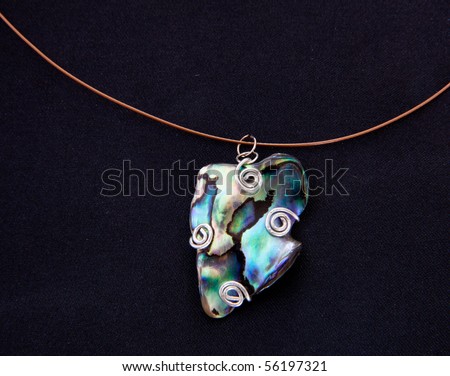How to decide whether to submit only to the “macro” sites
I mentioned Alexandre Rotenberg before but he has posted an interesting article on his blog about the decision whether to submit images as RF to all the microstock agencies or RM to the more expensive midstock or macro agencies.
That got me thinking about what this decision is really all about and whether he has asked the right question! So I’ll try and work through the question with some examples. Firstly, this is not really about RF or RM – if you recall one of my previous attempts to clarify RF, RM, Editorial and Commercial stock, RF and RM are just two different licensing types – RF gives the widest license as it allows the use any number of times for ever whereas RM defines the specific use case that the image is being licensed for. Logically, RF should be more expensive than RM (as it gives more rights), but that isn’t the way the industry has developed! Finally, editorial usage is a suggested restriction on the usage of an image because it is believed to contain either people or property which could cause legal issues if it was used to promote a product or a point of view. People often think that if you don’t have a model or property release, then it must be licensed as RM, but that is not the case. As I explained last week, I decided to place one of my images on Alamy as RM and I will try to delve deeper into the logic of that below.
All the microstock agencies sell images as RF – because it is easy to understand and supports an automated “buy it now” or subscription plan. Sites such as Alamy, Corbis (as was), Getty support both RF and RM images as their buyers are sophisticated enough to understand the various usage models in RM and have enough money to pay for something that is a little more unique or exactly meets their needs. It is my belief that many of these sophisticated buyers work for companies that have accounts on Alamy and so simply go there for their images regardless of whether they could have found the same image elsewhere for less money. If your company is paying and has an account, why go to the extra trouble of searching many other sites (and then finding you need to open an account there) in order to save some money?
OK – so what is the answer to the question – where should you put your images to get the best return? Firstly, I looked at all my sales on Alamy and Getty (which I got into via their purchase of Corbis) since last September. I looked at sales where the purchase price was more than $150 and it ranged up to $532. I then sorted those between RF and RM and ended up with 11 RF sales and 7 RM sales greater than $150. I then calculated the average sales price (remember I get at least 50% less than this) and the answer was:
RM sales: $244 RF Sales: $252
Now not a great sample size I admit, but instructive still the same. It appears that it is the type of agency that dictates the price, not whether it is RF or RM licensing. What was also very interesting when I looked at the actual RF images that had sold – they were the same images that were available for a few dollars on the microstock sites. So this one sold for $369 on Getty:
This one sold for $225 on Alamy:
This necklace sold for $378 on Getty. It was made by my wife and so I did have a property release although I don’t recall if I needed it at the time:
What this reinforces for me is that the buyers of these licenses quite reasonably found the image that worked for their project and bought it from the agency they deal with. They have good payment terms, can return it if they don’t finally need it and presumably get great customer service as well. They got what they wanted!
What does this mean to us mere contributors? I think the general message is to put your images on as many sites as you can and that means they need to go as RF onto Alamy. Now that Alamy has a specific editorial marking (it used to be that if you didn’t have releases you had to make it RM), then there are no issues in submitting all your images to all the microstock sites and to Alamy and any other non-exclusive “midstock” sites you are willing to support. But should you only put your “best” images only on Alamy so that people are “forced” to pay that license free? I think the answer is that the image needs to be really special – either because of a location that is really difficult to access (and particularly interesting as well) or the light was so great that someone would be willing to pay extra just to get your image rather than something similar but not as good from a microstock site. To be honest, those images are few and far between for most of us.
So my sunlit waterfall from Kauai? I still think I was right to make this exclusive to Alamy (not sure the RM marking will make much difference), but I’m wavering a bit in my decision. Will I miss a number of enhanced and single sales on Shutterstock while waiting for this $300 sale on Alamy? Would I have got that $300 sale anyway because someone had an account there? I don’t know, but it sure is tempting to put it on all sites!
Views welcome!!











Hi Steve!
Thanks for explaining it one more time 🙂
As far as I understood from this post, you don’t mind having your landscapes with RF license on both micro and macro sites? I mean the same file on both sites.
// Anastasiia
Great explanation, Steve. You’re right that it’s not so much about whether it’s RF or RM, as you correctly mentioned RF licenses can be substantially more than RM, it all has to do with the agency you choose to license. It’s more of a Micro vs Midstock debate than RF v RM.
One point that we both didn’t make in our respective posts which I feel is important for the readers is that image-rights exclusivity is only possible under RM licenses, so a buyer that requires such option will gravitate towards RM and will pay a premium for such image (one more reason to wait out for bigger royalties at Midstock agencies). In this circumstance, the buyer will walk away if he/she sees such image on both Alamy and micros as RF.
It’s a fascinating industry and I appreciate you adding to the discussion. Our articles work to highlight how important it is for contributors to try to get into the head of the buyer and think about their images strategically.
Alex
p.s I think you made the right decision to place that waterfall image as RM at Alamy, hope you get a nice payout soon!
Hi Anastasiia
Yes, I think there is a lot of logic in having all your images on both microstock and macro agencies (as long as they are all the same license category (ie RF))
Steve
Steve,
well…. you make me rethink my strategy 😀
I thought it’s better not to post to different micro- and macroagencies since the price is different. But ok, I’ll now post my food to Alamy as RF. And hope to earn a bit more (at least per sale) than on Shutterstock and Adobe.
// Anastasiia
Alexandre
You are right and wrong about that exclusivity comment. It is true that someone might want exclusivity and be willing to pay for it, but the only way to really grant that is to have your image exclusively on one RM site so that they are aware of any other sales that have been made and what they were used for. Some people want exclusivity in the travel industry say, and having an exclusive arrangement with one agency would allow you to manage it. So it isnt an RF versus RM thing – it is an exclusive relationship with one RM agency that permits it
Steve
Hi Anastasiia
There are people that think it isn’t fair to sell the same thing for $300 on one agency and $5 on another, and I’m sure some of those will comment. I think that people are paying $300 for more than the image – they are paying for the ability to pay several months after they download the image, they are paying for customer service, account support, maybe even support for searching for one specific image. A microstock agency is 100% self service and you pay much less as a result. So I have no worries about selling on microstock and midstock agencies as long as I don’t either promise exclusivity or sell it RM on one and RF on the other.
Steve
Steve,
thanks a lot for the answer!
You’re definitely having a referral on Alamy 🙂
I’ll register this week!
// Anastasiia
Heeeey no Alamy ref link on your list to the right 🙁
Are you there through another agency?
I’m ready to join any macrostock agency with your referral link. Now I have images for RF licence and I’m gonna shoot more art shots for RM licence.
// Anastasiia
I think Alamy only has a referral program for buyers of images, not contributors! But thanks for thinking of me.
Steve
Hi. Thanks for the insight you gave me!
Just wondering weather this applies also to the video market.
I have many unique clips which I sell as RF in many sites.
Alamy does not deal with videos anymore – so what are my options going RM? (I only sell RM through NatureStock)
Hi Arbel
I don’t really know about video. To a large extent, it doesn’t have the long history of still photography, which is where much of the RM licensing originated, and I only submit to Pond5, Videoblocks, SS and Adobe with my attempts. The only real choice is editorial or commercial.
Steve
Steve,
I’d suggest that you should – as a working photographer – be working on creating images that you can and should submit to both RM and RF markets. The more unique the image, and the harder it would be to recreate, the more likely it would make a great RM image. So as a photographer, you should be trying to make RM images.
Here is an example I used in the past to explain my thoughts. A bird photographer creates a photo of a robin harvesting a worm in the yard, probably not so unique. A photo of an eagle grabbing the fish out of a water and your angle shows a full wing span, most likely more unique. If you think this way, it becomes easier to decide what license you want to offer for use of your image.
George
P.S. – Great waterfall shot! Good you put that one in the RM category, as I am sure it will sell.
Thanks George. I guess my main point is that we jump to the conclusion that the licensing of an RM image earns more for the contributor than the licensing of an RF image (on the same agency). I no longer believe that to be the case, and so restricting a “good” image to being RM on the sites that support those licenses does not maximize our earnings.
Steve
Thank you for another great article!
I used to shoot and sell RM images only, however, I’ve seen an incredible decline in both RM sales and RM prices. So I switched to more RF, and keeping the really special stuff for RM, as you suggested here too.
Thanks Bjorn. My thinking has evolved a bit further – I’m beginning to wonder if there are any special images that we are producing that should only be on RM. Perhaps I ought to write a blog post about that. What would be the reason to restrict an image to very occasional sales from an RM site when the prices for RM licenses are no higher than RF on that same site.
Hi Steve I tend to upload to Alamy as RM images for which I need a release and don’t have one and the image has been digitally modified. Also images that require a release but are not news worthy. Additionally, I chose that route for model released images of family members and friends so I know where they go.
I have had images zoomed on Alamy and immediately thereafter purchased on Dreamstime. I don’t think it was a coincidence as it happened more than once and I seldom have a sale on DT. But I tend to think I am losing money from one customer only. I don’t know.
A.
Hi Alessandra
Interesting point about the Alamy zooms – I will have a look at some of mine and then look for the sale of the same image on a different site.
Certainly worth investigating! By the way – is there a way to see the date of the Zoom? I can see them for a specified period (ie last month), but then am not sure how to tell on which specific day it was zoomed?
Steve
Steve, I don’t know how to find out the exact date of the zoom. I look about once a week for zooms, when I have to optimize my images. So within a week, if it is purchased on another site, I know.
Hey Steve,
I’ve been reading your fabulous website recently. I just wanted to see if I could pick your brains further…
I was so interested to read this article about midstock or microstock. Have been thinking recently, why am I putting my best ones on SS to sell for a few cents? However, I’ve sold only 1 image from my tiny Alamy portfolio, although did get $21 for it!
Is it worth trying to boost my SS portfolio with more editorial content? In your experience is it difficult to get Editorial images accepted on Shutterstock? I tried a few, but never seem to get the caption right and they get rejected! Do you think there is any benefit in pursing this with SS, or perhaps uploading editorial content to Alamy instead? Or does Editorial never generate sales anyway?
I’m actually over the moon that every day one or two of my images are downloaded from SS. I only get around $2 a day but then I only have 460 in my portfolio – how many images do you think I need to start generating more serious returns on SS?
Well done again with your fascinating website and inspiring portfolios,
Hi Sarah
Thanks for your kind comments about the site! This question about midstock versus micro has been the subject of much thought as I worry whether I am throwing money away by sticking certain images only on the midstocks (which for me is really Alamy and perhaps Zoonar). Once you get over the mental barrier of selling your “good” shots for a few cents on iStock, say, the big question is whether a typical buyer on Alamy will find the image there and search elsewhere to buy it cheaper? My initial analysis suggested that people do buy on Alamy even though the same image is available on other sites for less, although I can’t prove the opposite – do people buy from Dreamstime, say, having initially seen it on Alamy? I’m going to watch my Alamy zooms for a time and then see if the same image sells in the next few days elsewhere to try to satisfy myself.
I’m putting more editorial now on the micros – StockSubmitter makes it easy to do, and I do see sales of editorial travel images via Shutterstock in particular. So I’m going to do more of that. The same question as the one posed above still applies though, so I’ll watch for that in the zooms.
I think volume is everything in this game – so 460 is not enough. Set a target of 50 a month perhaps and try to stick with that. Take some still life studio shots when you have nowhere to go or the weather is bad. Look at what is in the news and what images they use to illustrate it – all those ways will increase your earnings.
Steve
Great feedback Steve and most appreciated – thanks for taking the time to reply. I like the home studio idea. Its interesting to hear that you do put editorial on the micros . I have many images, for example – interiors of buildings and city skylines, that are abandoned on my hard drive, which I’m now encouraged to submit. Your website has already given me a much better understanding of stock photography, …what a fabulous resource!
I have had zero success on Alamy and I struggle to determine why they rate most of my images as ‘not discoverable’. I am interested in your comment that you put your best images on Alamy exclusively. Did you ever have an issue with discoverability on Alamy?
Hi Phyllis
I used to put my best shots on Alamy because I believed the wisdom that you hear from many photographers that microstock and RF is for quick commercial images but to really get the value from a great image, you should make it Rights managed on a midstock site such as Alamy or Getty (or one of the smaller boutique agencies). I’m now thinking that isn’t right and that even great images should be RF and on all sites. Alamy is a strange site – I do have 5000+ images there and even so, sales can be erratic. But it is easier to upload to these days and so I just add it to my list of agencies for every shot. The discoverability issue is strange as well. I’ve heard from others that it makes no difference at all and to get to “high discoverability” requires 50 keywords which only invites spam. Currently I have 2969 images with poor discoverability!
Steve